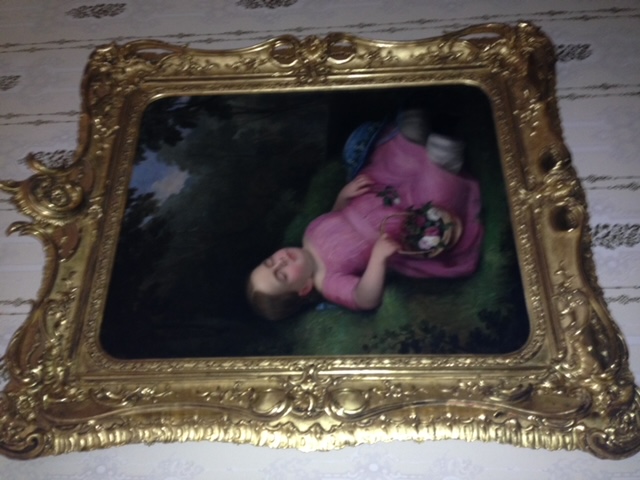Encyclopedia Dubuque
"Encyclopedia Dubuque is the online authority for all things Dubuque, written by the people who know the city best.”
Marshall Cohen—researcher and producer, CNN
Affiliated with the Local History Network of the State Historical Society of Iowa, and the Iowa Museum Association.
DEATH PORTRAITS
Many American families in the 19th century felt the need to capture the likeness of their dead children before they were laid to rest.
Before the age of inexpensive photography, parents who lost young children grieved even about not remembering what they looked like. Some wealthy parents could afford to rush a portrait painter to their home to product a picture they could keep. These parents, however, were few in number leaving the producing of an image to a photographer.
Daguerreotypes, accustomed to capturing the image of famous people like Abraham Lincoln, Ulysses S Grant and Robert E Lee, were soon being used to help in the grieving process. The images usually showed the infants with their eyes closed, as if they were having a peaceful sleep. Photographers, sometimes, would attempt to make the subjects appear alive, by propping them up against tables or chairs, holding their eyes open, or even painting pupils onto the print. Rosy tints were even added to the cheeks of corpses and sometimes they posed alongside their siblings, who were still alive.
By the beginning of the 20th century the daguerreotype had been replaced by a simpler and cheaper photography. Post-mortem photography gradually fell out of fashion as more families could afford to take portraits of their children as they grew up.
---
Source:
1. Tour of mansion
2. Summers, Chris, Stay Dead Still: The Gruesome 19th-century Portraits of Children Who'd Passed Away Which Helped Their Parents to Recover From Bereavement, Mallonline, Online: Dec. 25, 2016


